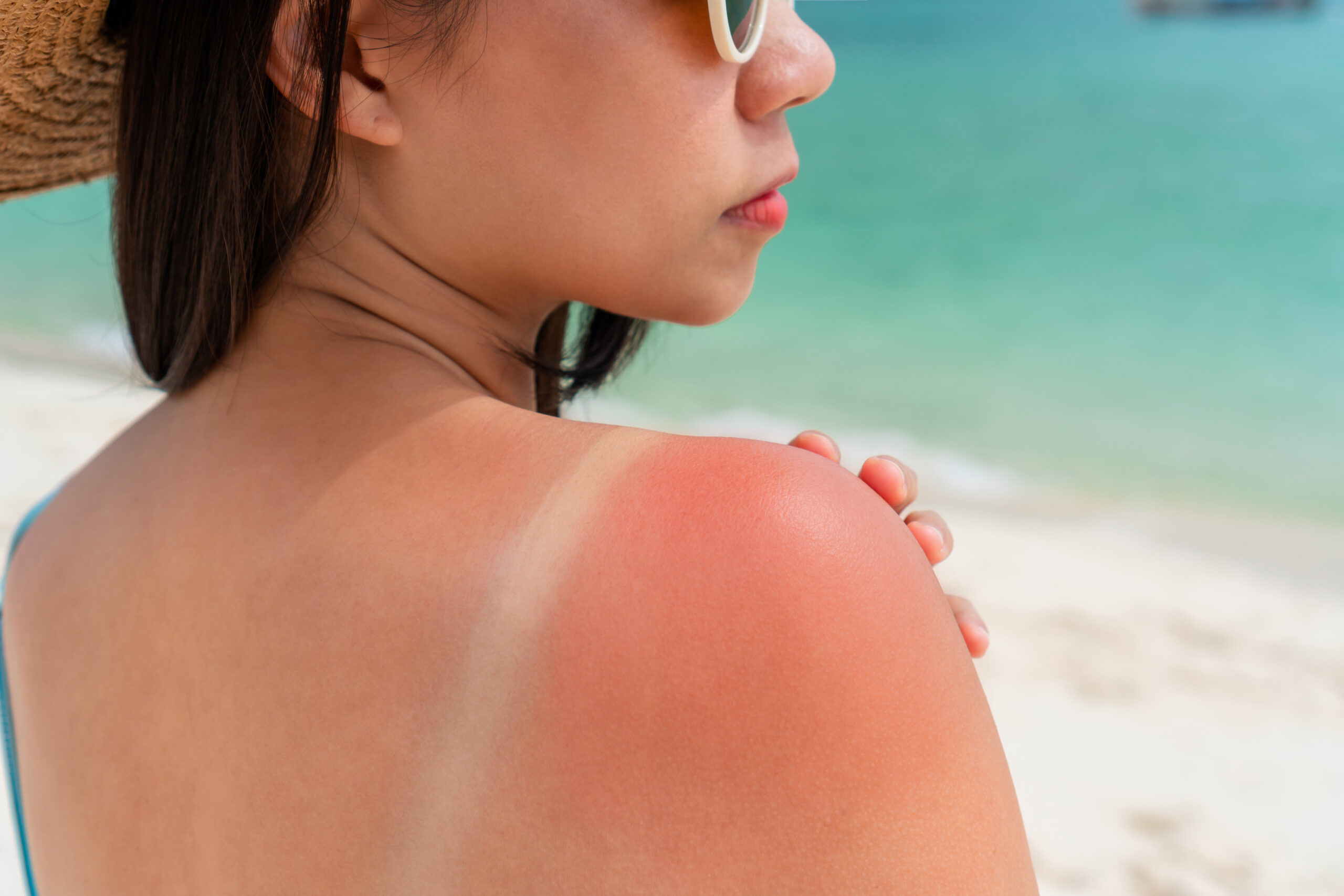
A day in the sun may do more harm than the eye can see.
Spending a day, or even a few hours, outside in the sun can be good for the soul. The bright light helps keep your circadian rhythm in check and being outside among the fresh air and sunny rays may brighten your mood. But if you’re not careful about protecting your skin, too much sun exposure may cause lasting damage to your skin.
Here are answers to common questions about sunburns:
Why does skin turn red when you get a sunburn?
When your body is exposed to too much ultraviolet (UV) radiation, it damages the epidermis, the outer layer of skin. Once this happens, the body’s immune system kicks into gear, dilating blood vessels to increase blood flow to the damaged area so it can heal. This causes the redness and inflammation experienced with a sunburn.
Why do you sometimes get blisters when you get a sunburn?
If you get a bad sunburn, you may notice blisters on your skin. Don’t pop them. These blisters help shield your damaged skin while it heals. Popping them may not only increase the time it takes for your skin to heal, but can also increase your risk for infection.
Why does your skin peel after getting a sunburn?
As your body regenerates new healthy skin to replace the skin damaged from a sunburn, the old skin may peel off. As with blisters, it’s best to let your body work its magic according to its own timetable, so don’t try to pull skin off before it’s ready to peel on its own.
Why do sunburns increase your risk of skin cancer?
When you get a sunburn, the ultraviolet light causes damage to the cells of the skin. Most of this damage is repaired by the body and your skin heals, but sometimes there are cells that aren’t fully repaired. These cells may develop mutations that could eventually become cancerous. That’s why the more sunburns you get over your lifetime, the more you increase your risk for skin cancer.
What is the best way to prevent the damage caused by sunburns?
The best way to protect your skin is to avoid overexposure to UV rays by following these tips:
- Wear a broad-spectrum sunscreen (that blocks both UVA and UVB rays) with an SPF of 30 or higher.
- Apply sunscreen at least 30 minutes before going in the sun and reapply every two hours.
- If you get wet, such as from swimming or sweating, reapply more often (and use a waterproof or water-resistant sunscreen).
- Protect delicate skin on your face by wearing sunglasses and a broad-rimmed hat.
- Wear UV-protective clothing.
- Avoid the sun when it is at its strongest, between 10 a.m. and 4 p.m., and seek out shade when possible.
- Keep in mind that your skin can still get damaged from the sun even when it is cloudy or cool. That’s why it’s a good idea to wear sunscreen every day.
- Don’t use tanning beds.
Sunburns are a leading cause of skin cancer, so it’s best to do what you can to protect your skin from the damage caused by the sun. It’s also a good idea to see a dermatologist regularly so they can check for any suspicious-looking spots or moles that may indicate you have skin cancer.
“Sun exposure is the major cause of many skin cancers, and it contributes to aging as well as brown spots. Skin cancer is extremely common, and it can be disfiguring or even deadly. People do not realize how much sun we accumulate over a lifetime, and you really “pay” later for the sun damage done earlier in life. Simple precautions (like sunglasses, hats, sunscreen, umbrellas, and seeking shelter between 11 a.m. – 3 p.m.) are huge in the prevention of skin cancer. If you have a history of tanning, a history of sunburns, a history of frequent sun exposure, or a family history of skin cancer, make sure you are seeing your dermatologist and doing self examinations.”
-Stephanie R. Frederic, MD, FAAD
Copyright 2023 © Baldwin Publishing, Inc. Health eCooks™ is a designated trademark of Baldwin Publishing, Inc. Cook eKitchen™ is a designated trademark of Baldwin Publishing, Inc. Any duplication or distribution of the information contained herein without the express approval of Baldwin Publishing, Inc. is strictly prohibited.
Date Last Reviewed: May 17, 2023
Editorial Review: Andrea Cohen, Editorial Director, Baldwin Publishing, Inc. Contact Editor
Medical Review: Perry Pitkow, MD
Learn more about Baldwin Publishing Inc. editorial policy, privacy policy, ADA compliance and sponsorship policy.
No information provided by Baldwin Publishing, Inc. in any article is a substitute for medical advice or treatment for any medical condition. Baldwin Publishing, Inc. strongly suggests that you use this information in consultation with your doctor or other health professional. Use or viewing of any Baldwin Publishing, Inc. article signifies your understanding and agreement to the disclaimer and acceptance of these terms of use.